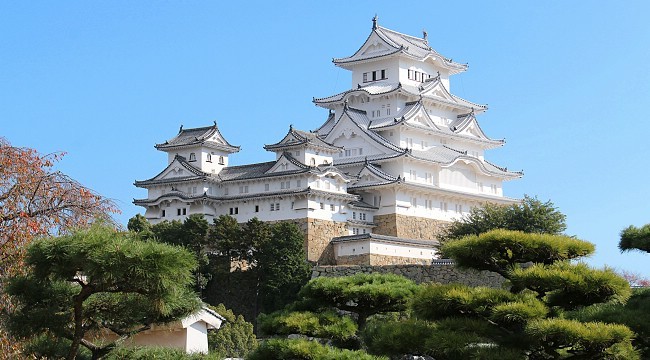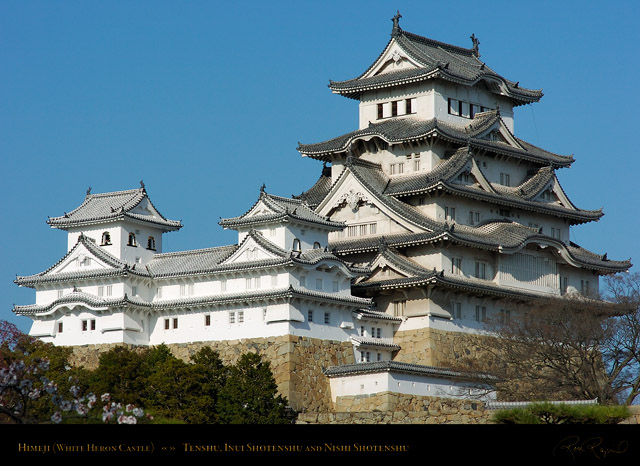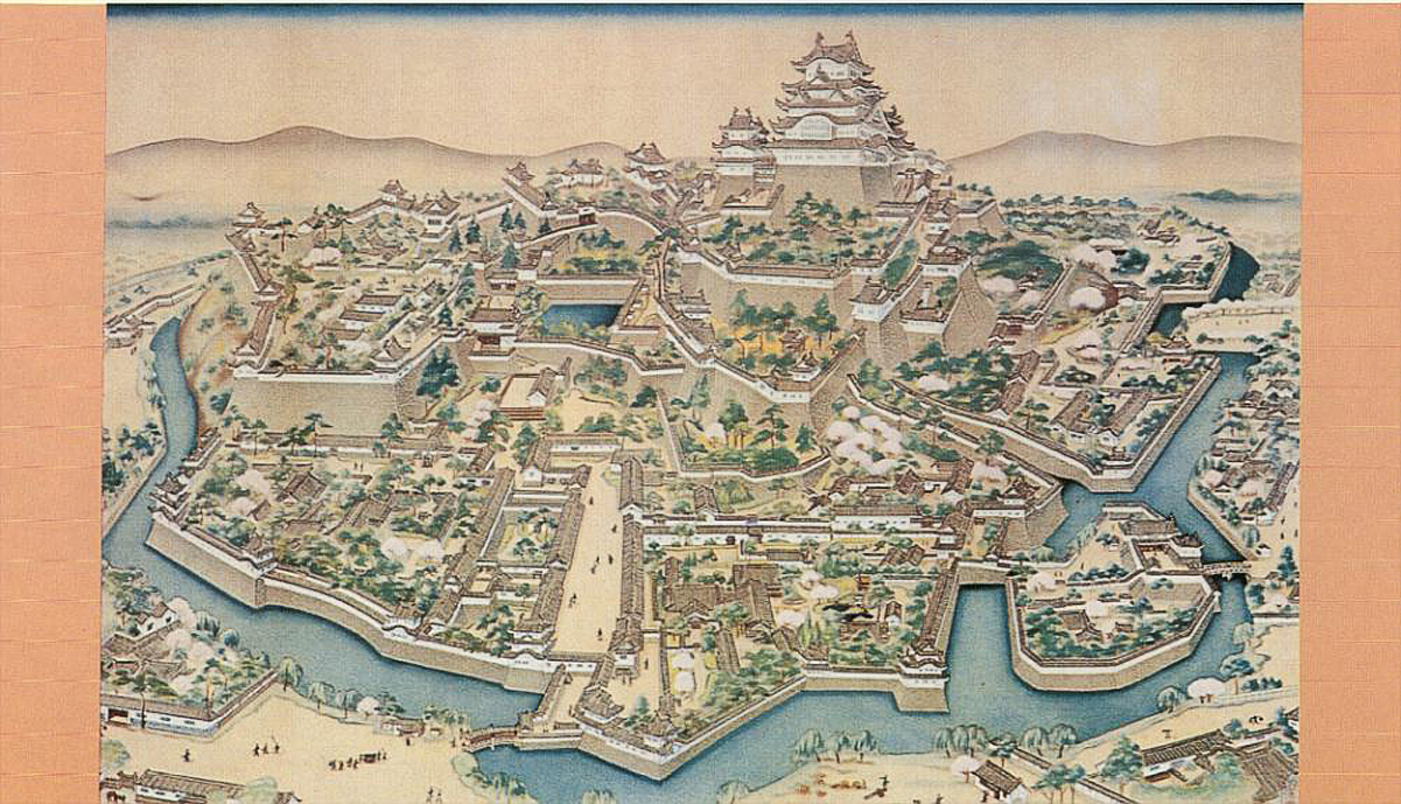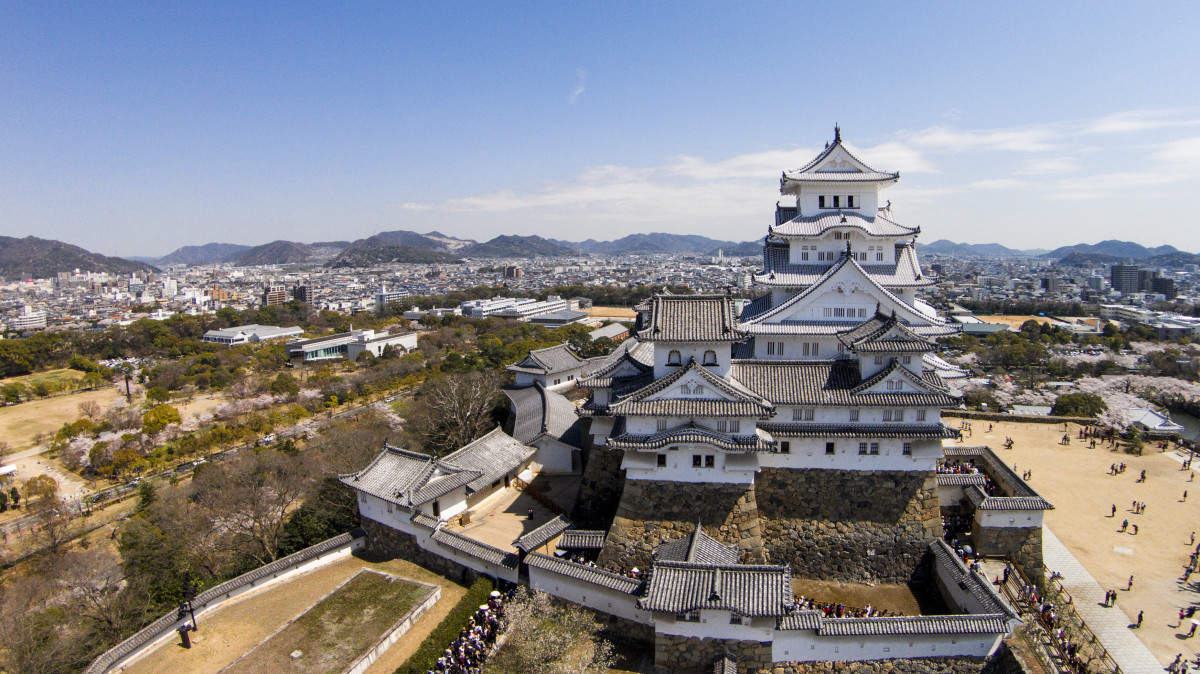Himeji Castle
P3
The Castle of Himeji
Himeji Castle (Japanese姫 路 城, Himeji- jo ) is located in the city of Himeji in Hyōgo Prefecture Japanese.
It is one of the oldest surviving buildings from the Japan of the 17th century. The castle complex, which consists of 83 separate buildings, is considered the finest example of Japanese castle building and has been dubbed Shirasagijō (白鹭 城, dt "White Heron Castle " ), an allusion to its white outer walls. Despite its architectural beauty, such as its spiral layout, its fortifications ( nawabari ) are highly developed, so that the castle was considered practically impregnable.
The Castle of Himeji is one of the national treasures of Japan and was recognized in 1993 by UNESCO as a World Heritage Site.
The roofs and walls of the castle to be renovated from April 2010 to March 2015.
History
The first buildings of the castle were built at the beginning of the Muromachi period in 1346. As an architect applies Sadanori Akamatsu, who has previously built the Shomyoji Temple at the foot of Mount Himeji and in its place there arose the castle.
The largest extension that is often referred to as the actual start of construction Himeji- Jo, 1580 took place when Toyotomi Hideyoshi took over the castle and had built three-story castle towers.
After the Battle of Sekigahara, the castle fell to Tokugawa Ieyasu, who shortly thereafter Ikeda Terumasa left. This extended the facility within a eight -year construction period from 1601 to 1609 with typical elements from the Momoyama period to its present form. He also built the five-story main building (天 守 阁, Tenshukaku ). The last major expansion of the castle dates back to the year 1618.
The actual residence was demolished after 1868, but received the fortifications around the impressive - but never intended to live - Tenshukaku.
In Ikeda followed:
- Honda (1617-1639)
- Okudaira (1639-1648)
- Matsudaira (1648-1649)
- Sakakibara (1648-1667)
- Matsudaira (1667-1684)
- Sakakibara (1684-1704)
- Honda (1704-1741)
- Matsudaira (1741-1749)
- Sakai (1749-1868) with an income of 155,000 koku.
At the end of the Second World War, Himeji- jo was bombed, survived this but virtually undamaged.
Himeji- jo already served several times as a film set for international well-known productions: In the James Bond film You Only Live Twice (1967 ) it was shown as the headquarters of the Japanese secret police, in the year ( 1980) the castle in James Clavell Shogun was seen under the pseudonym Osaka Castle, a considerable part of the film Ran (1985 ) by the Japanese director Akira Kurosawa plays there, and also scenes of the samurai epic the Last Samurai (2003) were filmed there.









